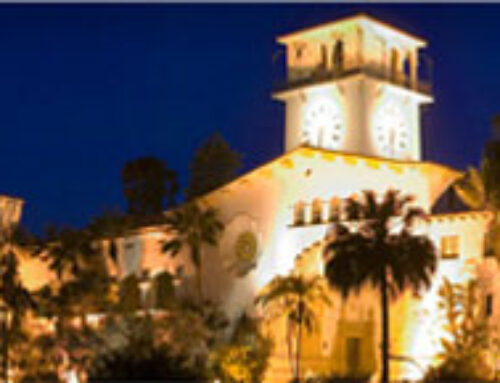Donning our N95 masks for another day in smoke-filled Santa Barbara, we watch in awe while more than 7,000 firefighters do battle with the Thomas fire as it continues to threaten our communities. Western Ventura County has been devastated by the loss of more than 900 homes (and counting). Neighborhoods at the east-end of Carpinteria, in Santa Barbara County, were spared only through heroic efforts by firefighters after the winds caught them off guard and pushed the fire across their firebreak at Highway 150. Larger landowners in the foothills were not so lucky, and crops and orchards have been damaged across both counties. Now, ten days after its start, the 4th largest fire in California history sits above Summerland, Montecito, and Santa Barbara threatening thousands of lives and tens of billions of dollars of real estate and economic activity. We hope that the firefighters’ intense efforts to make line and lay hose will be enough when the anticipated winds return tomorrow.
Meanwhile, life and commerce in our smoke and ash-choked communities has been at a standstill while we wait to see what will happen: School is cancelled and employees are home with children. Holiday events are cancelled. Freeways close intermittently, not that the tourists are coming anyway to a beach town covered in ash. Construction workers are idle. There are power outages and problems with point of sale systems. Food, beverage, and hospitality businesses built around outdoor lifestyles and service have seen sales plummet and many have been unable even to open their doors to the very few customers. The hourly wage-earners in our community find themselves without shifts to work, and holiday spending budgets are adjusted downward. This will not be a good holiday retail season on the central coast. No doubt, the Thomas Fire will affect the vitality of the entire business community. Here are five things you can do now to take care of your own business.
- Make and keep records of the effects. Take photos. Keep receipts. Document the conditions that you feel required you to close your doors or that affected your sales. Document decisions made to keep paying employees despite the drop in business. Consider creating new bookkeeping accounts to track extraordinary expenses you incur. Save news articles discussing the effect of the smoke on local business, foot traffic, holiday sales, road closures, etc.
- Get your insurance picture into focus. Businesses are rarely insured for “bad air quality,” but your policy may provide coverage in the event you can establish “smoke damage,” including from an occurrence resulting in contamination of your property with ash and soot. Like the evil twin of Fiesta confetti, ash from the Thomas Fire is making its way into every nook and cranny, not only into stores and office buildings that have remained open during the first, but into many of the historic buildings where unsealed windows and doors are prevalent. File claims promptly and document all of your interactions with insurance company representatives. If you lease your property, check you lease agreement and dialog with your landlord about insurance coverage and cleanup activities. A cooperative effort will lead to the best results.
- Get out in front of liquidity problems. If this fire is killing your cash flow, talk to your banker ASAP. Times like this are when the relationship with a community bank can pay off by drawing on existing emergency credit lines. Santa Barbara and Ventura counties have both been declared emergency areas, freeing up additional funds to pay for firefighting resources. We anticipate that similar declarations will be forthcoming to declare both counties to be disaster areas, while will permit the Small Business Administration to award low-interest Small Business Disaster Loans, along with FEMA grants. Keep an eye out for announcements about this and then work with your banker or apply online.
- Make a plan for cleaning up and getting back to work. Unlike confetti, there are health hazards associated with cleaning up smoke particulates. Consider hiring a qualified fire remediation company to do the cleanup for you, and have a conversation with your insurance company claim representative about whether they will cover that expense. Don’t forget to replace HVAC filters, and make sure you have a plan to let your customers know once you are back up and running.
- Keep an eye out for Tax Relief. Assuming the President declares Santa Barbara and Ventura to be disaster areas, the IRS will be able to afford affected residents and businesses with a variety of tax relief. While you may have hear that the current federal tax reform legislation working its way through Congress will eliminate tax relief for wildfire recovery, even if those provisions make it into the final law, they will not affect the 2017 tax year. Talk to your tax professionals and keep an eye out or check periodically with the IRS for more information.
The central coast is an amazing place to live and do business, where the community works together to overcome our challenges. As for the Thomas Fire — this too shall pass. If there is anything that the BFAS attorneys can do to help you or your business, please do not hesitate to call on us.
Marcus J. Kocmur, Partner
(Office) 805.966.7715
Disclaimer: This e-blast listing 5 things businesses can do now to deal with effects from the Thomas Fire is not exhaustive, nor is it legal advice. You should discuss your particular situation with us or with your own attorney. Our legal representation is only undertaken through a written engagement letter and not by the distribution of this material.



